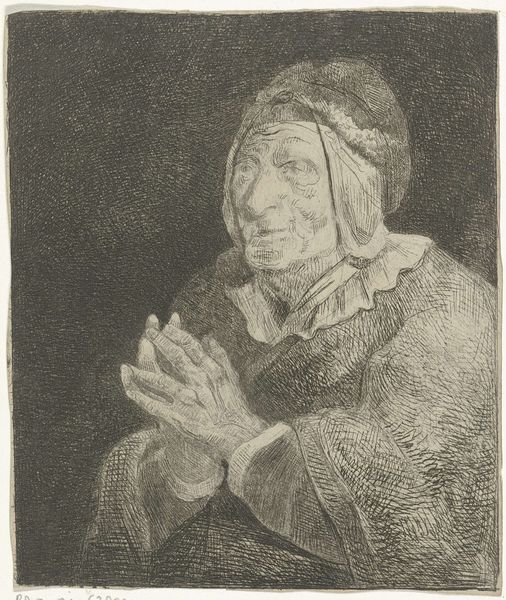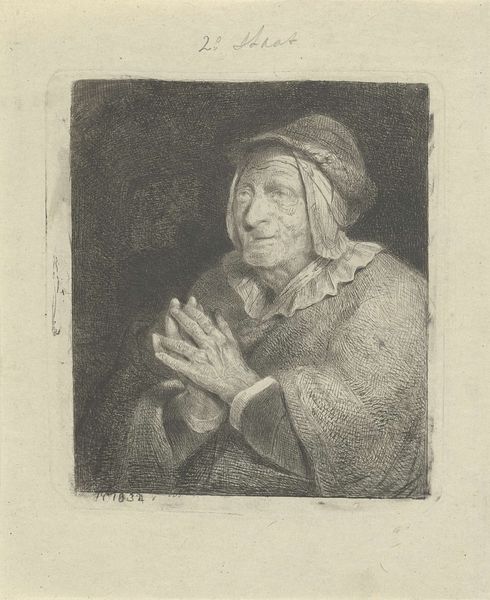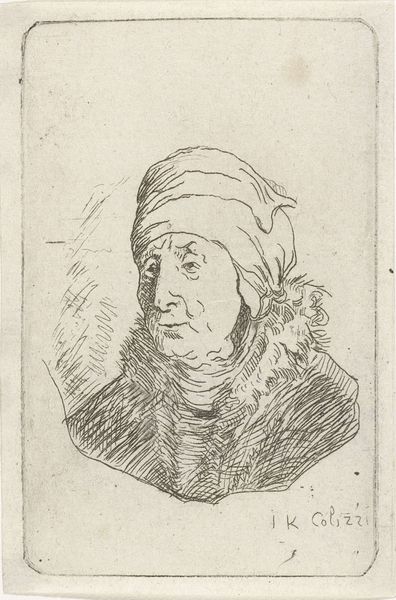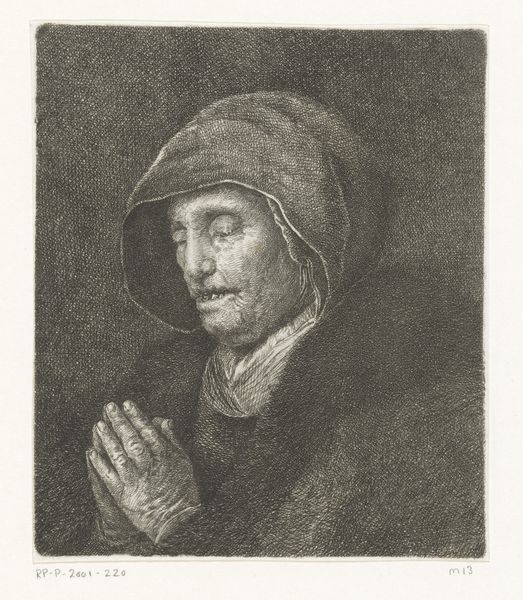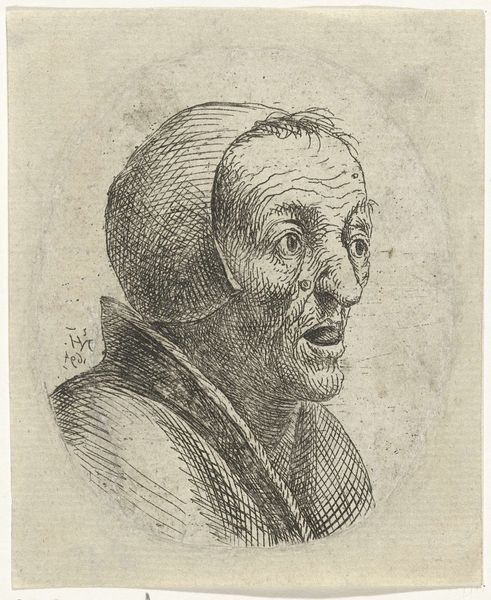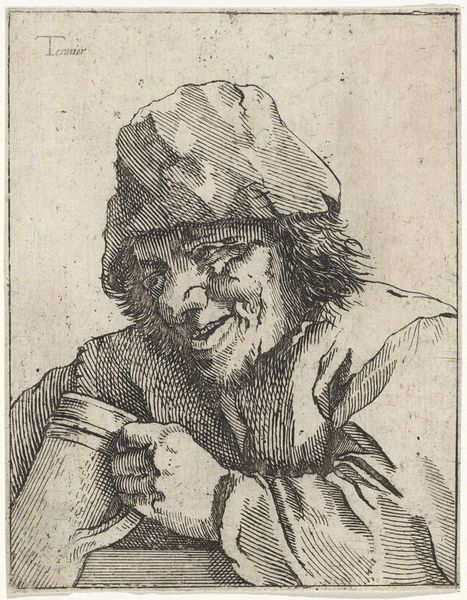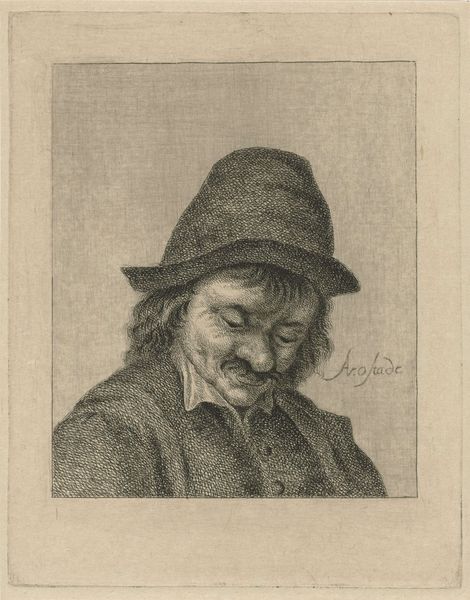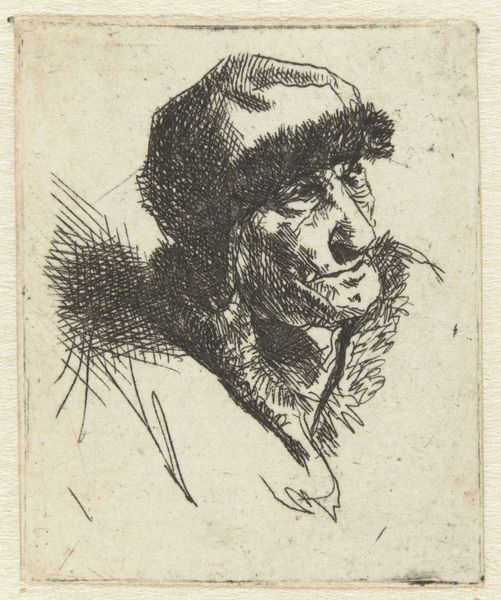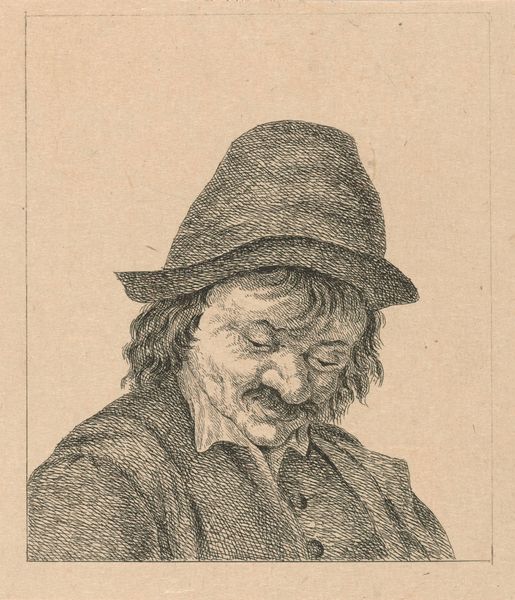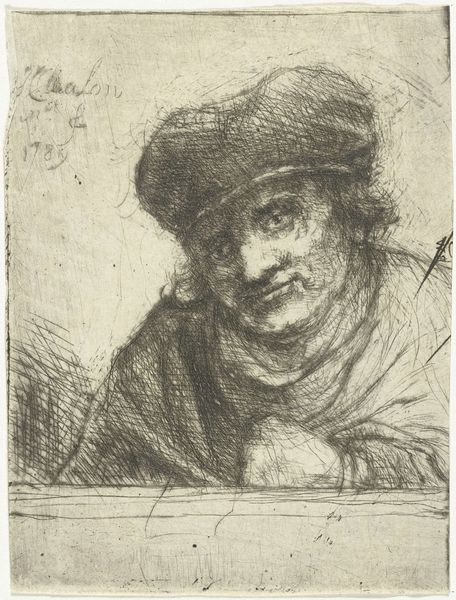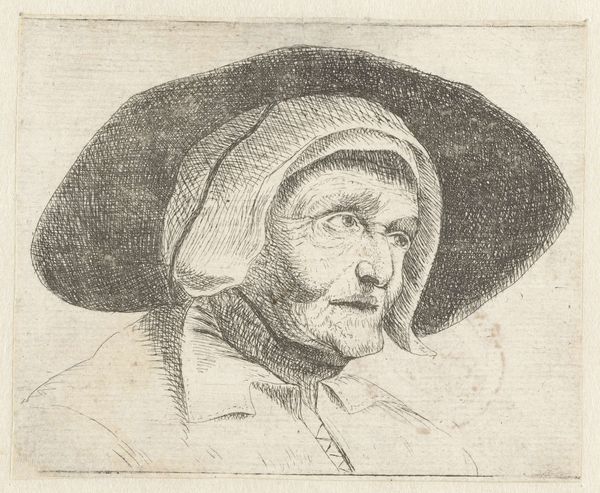
drawing, print, engraving
#
portrait
#
drawing
#
baroque
# print
#
portrait drawing
#
genre-painting
#
engraving
Dimensions: height 125 mm, width 92 mm
Copyright: Rijks Museum: Open Domain
Curator: Look closely at "Boer met hoed op het hoofd naar links," a work by Jan Lauwryn Krafft, likely created sometime between 1704 and 1765. This piece presents us with a portrait, rendered as a print. Editor: My initial reaction is intrigue mixed with slight unease. The sharp lines and the subject's somewhat mischievous grin create an interesting tension. The texture seems meticulously rendered, despite its relatively small scale. Curator: Indeed, Krafft's technique employs engraving to articulate both the man’s rough features and the folds of his attire. The artist manipulates light and shadow through dense cross-hatching. What meaning do you find in the visual treatment of the piece? Editor: Considering its potential timeframe, the portrait's seemingly unflinching gaze may speak to evolving social structures. Does it attempt an honest depiction of working-class individuals, separate from idealized aristocratic portrayals? The focus is undeniably on the individual rather than conveying societal status. Curator: Such representation was certainly becoming more common, aligned with evolving tastes during the Baroque period, shifting from purely allegorical imagery to an increasing appreciation for everyday genre painting. Editor: It is interesting to consider the intent and potential audience; was this a piece meant to circulate widely, perhaps among a more democratic viewership hungry for relatable imagery? How do you think viewers of the period would interpret it? Curator: Undoubtedly, accessibility was a significant factor, given the print medium's inherent reproducibility, aligning perfectly with that gradual shift to relatable imagery we were discussing. We could consider whether the rendering is empathetic or slightly satiric, or a novel blending of both! Editor: Looking again, it certainly presents layers of meaning beyond simple portraiture. It encourages consideration of societal shifts during a specific era of visual culture. Thank you. Curator: An astute analysis. The way such visual economies evolve certainly deserves further research!
Comments
No comments
Be the first to comment and join the conversation on the ultimate creative platform.
